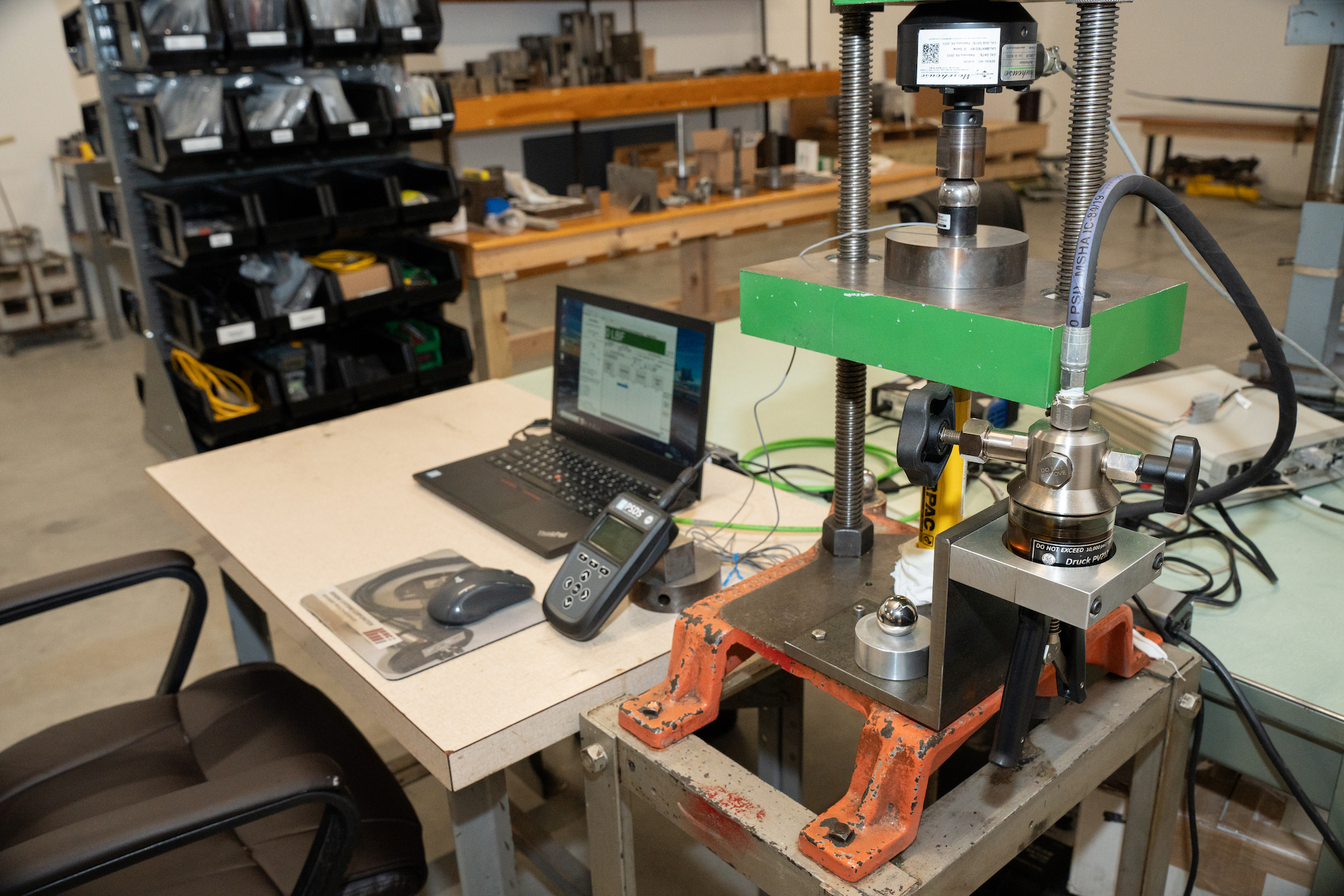Industry Insights
Ensuring Precision: The Significance of Metrological Traceability in Load Cell Calibration
In the world of measurement and calibration, precision is paramount. Accurate measurements are the foundation of quality assurance, safety, and compliance in various industries. To achieve this, organizations and calibration laboratories rely on metrological traceable standards. In this blog post, we’ll explore what traceable standards are, why they are crucial, and how they apply specifically to the calibration of load cells.

What Are Metrologically Traceable Standards?
Metrologically traceable standards are reference standards that can be traced by a documented unbroken change of calibrations to the International System of Units (SI). This is achieved through National Metrology Institutes (NMI), such as the National Institute of Standards and Technology (NIST).
NIST is a renowned agency that establishes and maintains measurement standards for the United States. You will often see laboratories state “NIST traceable standards” or “traceable to NIST,” when they actually mean “Traceable to the SI through NIST.” These are calibration standards and reference materials whose measurements are directly linked to NIST’s primary standards. These standards serve as a foundation for traceability, ensuring that measurements can be traced back to a known and established reference point.
Why Are Metrologically Traceable Standards Important?
1. Ensuring Accuracy and Consistency: traceable standards provide a universally recognized reference point for measurements. By using these standards and documenting the uncertainty associated with the measurements, calibration laboratories can ensure that their equipment and procedures produce accurate and consistent results, regardless of where the calibration is performed.
2. Quality Assurance and Compliance: Many industries, including aerospace, automotive, and healthcare, have stringent quality and regulatory requirements. Metrologically traceable standards help organizations meet these standards and demonstrate compliance with industry regulations.
3. Interoperability: In a globalized world, metrological traceability ensures that measurements are comparable and interchangeable across borders. This is essential for international trade, research collaboration, and standardization efforts.
4. Customer Confidence: When customers see that measurements are traceable to the SI through NIST or another recognized metrology institute, they have confidence in the accuracy and reliability of the calibration services they receive. This trust is vital for customer satisfaction and loyalty.
Traceable Standards and Load Cell Calibration
Load cells are critical components in various applications, from industrial weighing systems to force measurements in research and development. Calibration of load cells ensures that they provide accurate and reliable measurements. Here’s how metrologically traceable standards apply to load cell calibration:
1. Reference for Calibration: During load cell calibration, traceable weights and reference standards serve as the basis for verifying the load cell’s performance. The load cell’s response to known forces is compared to the measurements provided by traceable standards, ensuring accuracy.
2. Traceability and Documentation: Calibration reports for load cells should clearly indicate the use of traceable standards, and the uncertainty associated with a measured value. This documentation provides a transparent record of the calibration process and demonstrates that the measurements are traceable to a recognized metrology authority.
3. Quality and Precision: Using traceable standards in load cell calibration helps maintain the highest level of measurement quality and precision. This is particularly crucial in industries where safety, accuracy, and consistency are paramount.
Metrologically traceable standards are the cornerstone of accurate and reliable measurements in a wide range of industries, including load cell calibration. They offer traceability, quality assurance, and compliance with industry standards and regulations. When you choose a calibration service provider that utilizes standards that are traceable to the SI through an NMI such as NIST, you can be confident that your load cells will deliver precise and dependable results, ensuring the integrity of your measurements and the success of your operations.
Industry Insights
Load Cells for Robotics and Automation: Enabling Precision and Control in Robotic Systems
Industry InsightsEnabling Precision and Control in Robotic SystemsIn the...
INDUSTRIAL BOLTING
Background: A Bolted Joint is the most widely used method for fastening...
Enhancing Corrosion Resistance in Load Cells and Sensors with Electropolishing and Citric Acid Passivation
Industry InsightsThe Role of U.S. Load Cell Manufacturers in Advanced...



